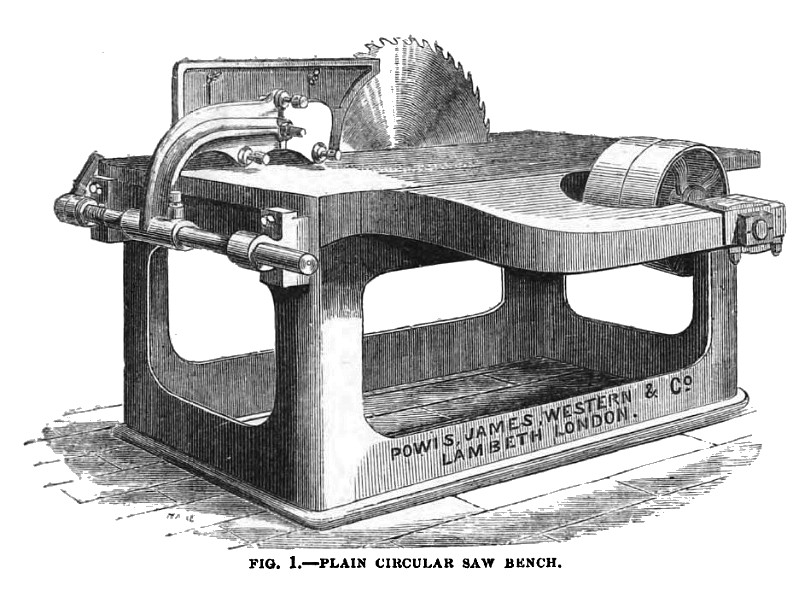|
Title: |
1880 Article-Powis, James, Western & Co., Circular Saw Bench |
|
Source: |
Woodworking Machinery, Its Rise, Progress and Construction, 1880, pg. 20 |
|
Insert Date: |
7/4/2018 4:18:00 PM |
|
We illustrate herewith (fig. 1) a plain circular saw bench, from the design of Messrs. Western and Co., Lambeth. It is a very good example of the 'box framing,' and is well and substantially designed. The introduction of the arm carrying the bearing outside the driving pulleys is an improvement, as it equalizes the strain on the bearings; it can be made either right- or left-handed, or rising from the floor line, which should be preferable, as it allows the bench to be driven from any direction. The fence is adjustable by means of a knuckle joint and set screws for cutting feather-edged boards; and as the elbow to which the fence is fastened swivels on a spindle at back of bench, it can be turned over out of the way for cross-cutting purposes. The pedestals for bearings are cast solid with the bench, but some makers are now fixing them in movable brackets, which can be easily taken off for repairs or renewals. The teeth of circular saws, to do the best and cleanest work, should travel about 9,000 feet per minute, and great care should be taken that the form of saw tooth is selected that is most adapted for the class of timber to be operated on, and that they should be accurately and properly sharpened, and have the right amount of 'set.' These points are oftentimes neglected, and the result is a considerable reduction in the quality and quantity of the work turned out. The ' packing ' of the saws is also a matter of importance, as, if well packed, a saw of thinner gauge can be run, which is a saving in power and also in wood, which, when valuable woods are being sawn, is a matter of much more moment than would at first appear. |
|
 1880 Powis, James, Western & Co., Circular Saw Bench
1880 Powis, James, Western & Co., Circular Saw Bench
|
|